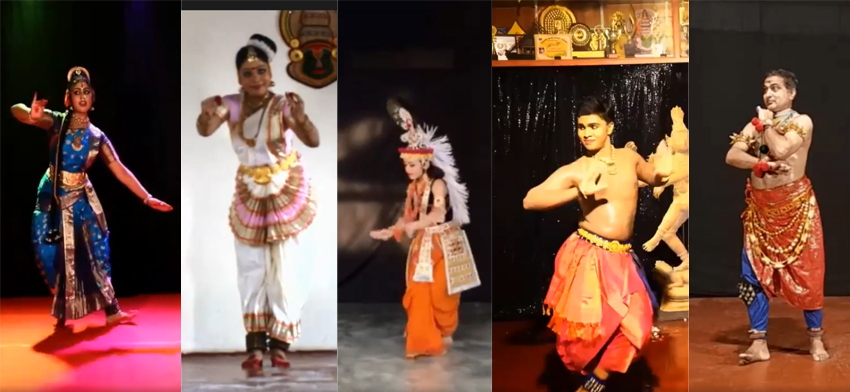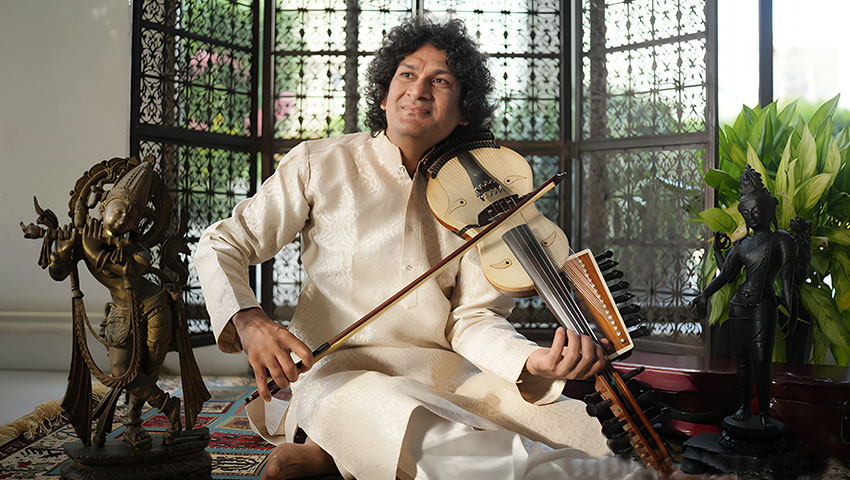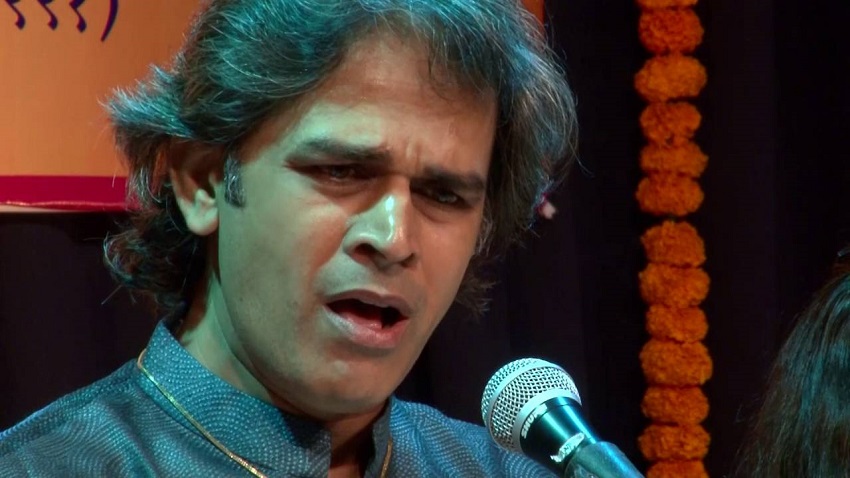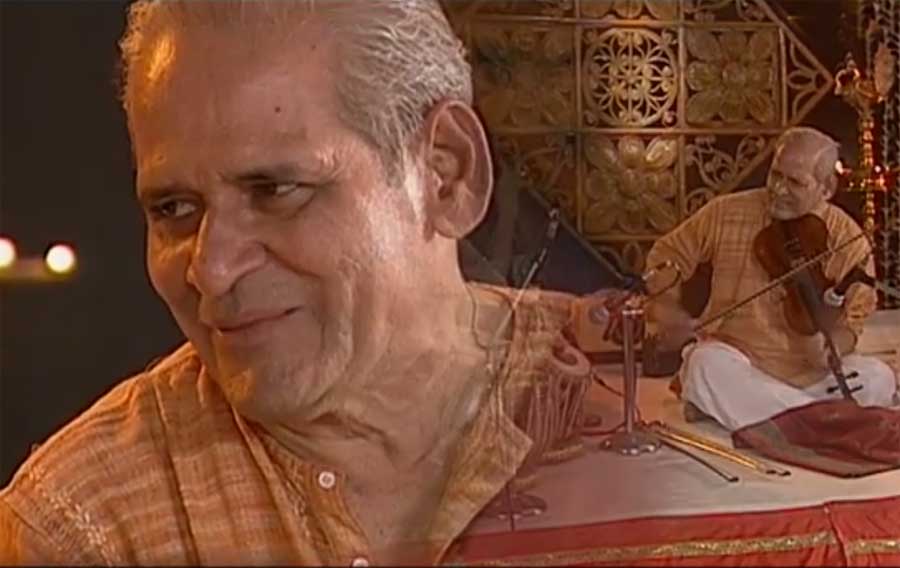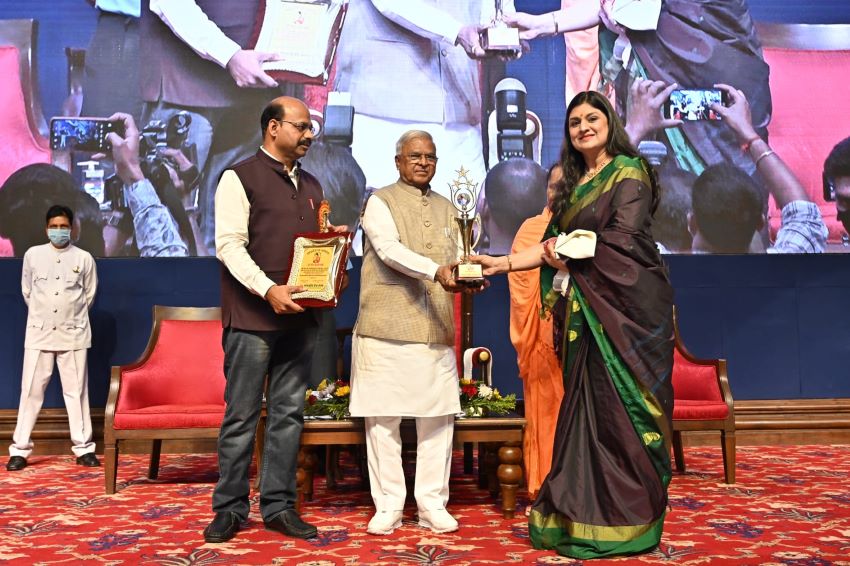UNIFEST FAMILY is a group formed by Dr. Sampson David (former director of AIU, Association of Indian Universities) consisting of Vice-Chancellors; Academicians; scholars, Professors, authors, orators, influencers, Artistes; Social Activists; Music, Dance & Theatre Exponents and Administrators who have come together to encourage and promote youth development activities in the country. On 21st Nov 2020, UNIFEST FAMILY curated ‘GHUNGROO’, an online festival of Indian classical featuring young artists, selected from across the country.

In his opening remarks, Dr Sampson David mentioned that artists often find themselves living in mini-worlds of art forms. Nandikeshwara in Abhinaya Darpana mentions how a thread should be used for joining ghungroos. Similarly, there needs to be a tread of connectivity connecting artists from fields of music, dance and fine arts who work on the University Level in order to bridge academia and performance worlds of art. This was the ethos behind the curation of Ghungroo festival hosted by Dr Vasanth Kiran and Dr Tina Tambe where a jury panel selected truly talented young dancers across India.
A name synonymous with Indian Classical Art forms Padmabhushan Dr Kanak Rele was the Guest of Honour along with Padmashri Gopal Prasad Dubey- Chhau Artist, SNA Awardee. In her address, Dr Kanak Rele emphasized how Bharata Muni and the Natyashastra is the fountainhead of all dance forms. She shared the story of how despite coming from an aristocratic Gujarati family her Ashan Panchali Karunakar Panicker told her not to do the Garba. Such was her passion for Kathakali that she did not think twice before giving up the beloved community ritual dance Garba. A beautiful life experience that shows how single-minded passion is the first attribute of becoming a good student of any dance form.
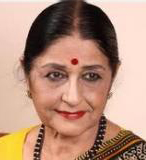
Dr Kanak Rele was the first to bridge theory with praxis. Before her, one often saw great theoreticians that did not dance and great performers that had nothing to do with theory. Being instrumental in bringing dance to the university system, she emphasized how the university is the place where a dancer can have a well-rounded training in both theory and praxis and wed them in their own approach as well as life. Dr Kanak Rele concluded by sharing how in daily life also, the Balramabharata by Swati Tirunal has become like the divine Geeta to her.
Prof Vanaja Uday concluded the opening ceremony with the apt lines ‘Haste haste gujara zamana yaad aane laga, gul tau gul sarra zama muskurane laga’.
Dr Tina Tambe from Mumbai and Dr Vasant Kiran from Bengaluru played the role of the Sutradhars and introduced the young performers from different parts of the country.
The performances began with Vinita Verghese from Bengaluru presenting. MohiniattamVinita in pastel white and pink presented a sophisticated and delicate presentation that was followed with Kathak by Harshdeep Kaur Bhatti from Patiala
Harshdeep presented Ardhanareeshwara Namah Shivaay combining both sweetness and fluidity with strength in her unique abhinaya. Her use of bhaava in the presentation of that was a unique feature.
This was followed by Odissi by Krishnendu Saha from Udaipur. A much-awarded dancer, one could see the numerous awards on display as a backdrop to his dance that truly did justice to Odissi. His immaculate anga shuddi and energetic presentation set him apart.

In contrast, was the graceful Himansee K from Warrangal who was regal as Satyabhama in her Kuchipudi presentation. An actress featured in Telugu and Kannada films, her use of drishti enhanced the portrayal of the simultaneously arrogant yet loving Satyabhama.
Rajkumari Gyaneshori Devi from Imphal presented Manipuri. Her piece depicting Lord Krishna Dancing with Chandravali suited her very well. Vakyarthaabhinaya, where a movement pattern is used to emote an entire line is extensively used in Manipuri and well-executed by Rajkumari.
[adrotate group=”9″]
Bharatanatyam dancer Atul Krishna Warrier from Kannur embodied simultaneously the power and grace of Nataraja as well as the lalitya and grace of Natawar in the piece where he described the attributes of both the dancing gods. The beautiful life-size sculpture of Nataraja in the background of the video resonated within the living dance in Atul’s body.
Chhau by Pradeep Bhasa from Sarikela was a true example of bhavanukirtanam of Nature. With the donning of the mask, the onus of the narrative falls on the sharirabhinaya that was beautifully executed by to soothing music that lead to an aural and visual delight.
Kalamandalam Mukundam presented Kathakali Cholliyattam. With 18-20 years of performing experience and numerous awards, he presented a piece from the popular Kalyanam Sougandikam in the role of Bheema. The subtle aharya gave rasikas a chance to observe in greater detail the movement vocabulary of cholliyattam. An inward atmabhimukhi manifestation, it drew the viewer into another world. In spite of the medium being an online Zoom performance, Kalamandalam Mukundam drew us into his world, forgetting our own homes and surroundings.
[adrotate group=”9″]
Ritrishna Bharali from Assam presented Sattriya. She began with a descriptive vandana of Krishna, depicting each sundar (beautiful) adornment on the body. Ritrishna’s graceful delineation reflected both anga shuddhi and precision set to soulful engaging music.
The viewer then went directly to Kerala with the graceful MA Ardra from Trivananthauram In the Natyautpatti Katha in Abhinayadarpanam, Parvati is said to have taught the lasya dance to Baanasur Putri Usha. This magnificent, unhurried grace that spreads over the music like a subtle blanket, is what sets mohiniattam apart from all other dance forms and was beautifully embodied by Ardra.
Tejashree Muley, actress and Kathak Dancer from Mumbai presented an energetic and vibrant shuddha nritya in Taal Jhaptaal.Her attention to nikas of the ghungroo sound was highlighted in each of the bols. She concluded with ‘Kahe karat mose barajori’, where the nayika complains to the nayak of his antics, scolding him but also enjoying their romantic interplay.
[adrotate group=”9″]
Atrrayee Chowdhury From Mumbai presented a song by Rabindranath Tagore Pratham Adi in invocation to the Sun. Her aharya of blue and yellow was suggestive of the sun against the sky and her lyrical dance portrayed the joyous journey of the Sun across the sky, giving life to the dance of the stars and planets.
An eternal theme in Indian Classical Dance- Krishna was presented in Kuchipudi by Kavya from Anantapur. She brought to life the popular composition Swagatam Krishna that suited the sweet timbre of her dance
Thangjam Bidyananda Singh from Manipur presented Vishnu Avatar, that truly suited the male form. Graceful with controlled energy, his dance struck the balance of energetic movement vocabulary and subtle narrative maxing it a simultaneous blend of exciting virtuosity with a timeless story. In contrast, one could see energetic feminine dance through Riddhi Sahakar from Mumbai presented a thillana in Bharatanatyam.
Kusmi Pattanayak, the second performer of Sarikela Chhau in the festival displayed how the dancer can convey emotion through the use of the Ghungroos to create evocative rhythmic patterns. The pleasant expression painted in the mask was reflected in the movement vocabulary that reflected a sense of joy and celebration.
[adrotate group=”9″]
This was followed by Kathakali by Kalamandalam Vishnumon from Kerala. He presented the conversation between Bhima and Hanuman from the popular Kalyana Sougandikam. Each dancer brings his own to the role and Kalamandalam Vishnumon similarly brought in an aspect of the ‘man-child’ within Bhima with a sense of petulancy.
The festival concluded with Sattriya from Assam by Sampurna Saikia. She presented a dance composition by acclaimed exponent Prateesha Suresh. The beautiful forest setting and well-produced music supported the emphatic abhinaya by Sampurna. The cows and deer that dance to the tune of Krishna’s flute were beautifully depicted leaving the viewer with a sense of joy, most important in the current stressful time of the ongoing pandemic.
Click HERE to watch the Ghoongru Festival



